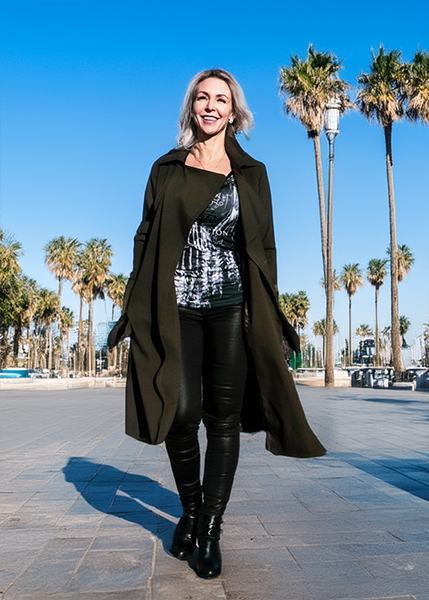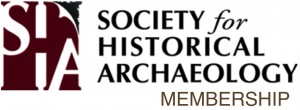Here’s the latest in our series of entertaining interviews with a diverse array of your fellow SHA members. Meet a member for the first time or learn something about a colleague that you never knew before. This blog series also offers current members an opportunity to share their thoughts on why SHA membership is important (Camaraderie? Professional service? Exchange of ideas in conference rooms and beyond? You tell us!). If you would like to be an interviewee, please email the Membership Committee Social Media Liaisons Eleanor Breen (eabreen@mountvernon.org) or Kim Pyszka (kmpyszka@aum.edu).
An Interview with Dr. Cynthia Cone (cynthiacone72@outlook.com), an independent archaeologist currently based in Riverside, CA. Cynthia has spent over two decades exploring and studying the civilizations of the American Southwest. Her research primarily focuses on the Puebloan cultures and their intricate social structures, religious practices, and architectural achievements. Cynthia’s dedication to community archaeology and public education has made her a well-known figure in the local community. She actively participates in the Society for American Archaeology (SAA) and the Society for Historical Archaeology (SHA), contributing significantly to both organizations’ educational and outreach initiatives.
What inspired you to become an archaeologist?
Growing up in Smithtown, NY, I was always an avid reader, losing myself in stories of adventure and discovery. One summer, when I was about twelve, my family took a road trip across the United States. We visited national parks, historic landmarks, and even a few lesser-known spots that held their own unique charm. It was during this trip that I developed a love for exploring and understanding the world around me. At the Grand Canyon, I remember standing in awe of the vast expanse and thinking about how much history was embedded in those layers of rock. Each stratum represented a different era, a different chapter in the Earth’s story. This realization sparked a deeper interest in the past, not just through books but through tangible evidence of human existence and natural history. When we returned home, I began to volunteer at a local historical society and participated in small-scale digs. The excitement of uncovering artifacts and piecing together the lives of people who once inhabited the area was exhilarating. This blend of adventure, discovery, and storytelling naturally led me to pursue a career in archaeology, where I could combine my love for history, exploration, and the thrill of uncovering the unknown.
What has been the most challenging aspect your career?
One of the most challenging aspects of my career has been navigating the bureaucratic hurdles involved in obtaining permits and funding for archaeological research. Securing the necessary permissions to excavate and study sites often involves complex negotiations with multiple stakeholders, including government agencies, indigenous communities, and private landowners. Additionally, balancing the rigorous demands of fieldwork with academic responsibilities and public outreach requires meticulous planning and time management.
What are you currently reading?
I’m currently reading A Dying Fall by Elly Griffiths. It’s an enthralling mystery that combines elements of archaeology with a gripping detective story. The novel follows Dr. Ruth Galloway, an archaeologist who becomes embroiled in a complex investigation involving a series of deaths and a historical secret that resurfaces. What I appreciate about Griffiths’ writing is her ability to blend intriguing archaeological details with a compelling narrative. The setting, which incorporates elements of the archaeological field and the challenges of unearthing historical truths, adds a unique dimension to the mystery. The characters are richly drawn, and the plot keeps you guessing with its twists and turns. The book is not only an engaging story but also a thoughtful exploration of themes related to history and the impact of the past on the present. It’s a perfect blend of mystery and archaeology that keeps me captivated while providing a deeper reflection on the field’s complexities.
What has been the most rewarding aspect of your career as an archaeologist, and what are your aspirations for the future?
The most rewarding aspect of my career has been the opportunity to engage with the public and share the wonders of archaeology with a broader audience. Witnessing people’s reactions when they learn about the tangible remnants of our past is incredibly fulfilling. There’s a unique joy in seeing someone’s eyes light up when they hold an artifact or hear a story about the people who used it centuries ago. Public archaeology allows us to make history accessible and relevant, fostering a deeper appreciation for our shared heritage.
Looking to the future, I aspire to expand my research on colonial and indigenous interactions in early America. I believe there is still much to learn about the complex relationships and cultural exchanges that shaped early American history. I also hope to continue developing educational programs that make archaeology accessible and exciting for all ages. By creating interactive experiences, workshops, and lectures, I aim to inspire the next generation of archaeologists and foster a love for history and discovery. Ultimately, my goal is to make meaningful contributions to our understanding of the past and help bridge the gap between ancient civilizations and our modern world.
How does your involvement with the SHA enhance your research and professional development in the field?
My involvement with the SHA has been transformative for my career. One of the biggest benefits has been the mentorship opportunities. Through SHA, I was paired with an experienced archaeologist who provided invaluable guidance and insight, helping me navigate the early stages of my career. This mentorship has been instrumental in shaping my research focus and professional trajectory. Additionally, SHA offers numerous grants and scholarships that have funded several of my projects. These financial resources have allowed me to undertake fieldwork and research that would have been difficult to pursue otherwise. The funding opportunities have not only supported my projects but also given me the chance to collaborate with other researchers and institutions, broadening the scope and impact of my work.
SHA’s commitment to professional development is another key advantage. Their workshops and training sessions cover a wide range of topics, from advanced excavation techniques to the latest digital tools in archaeology. Participating in these sessions has kept me up-to-date with the latest methodologies and best practices, enhancing the quality of my research. Last but not the least, the sense of community within SHA is incredibly supportive. The connections I’ve made at SHA conferences and events have led to lasting professional relationships and collaborations. The society’s inclusive and collaborative environment fosters a sense of belonging and mutual support, making it easier to share ideas, seek advice, and develop innovative projects. Overall, SHA has been a cornerstone in my professional development, providing resources, support, and opportunities that have significantly advanced my career.
What are your thoughts on the future of archaeology?
I believe the future of archaeology lies in interdisciplinary collaboration and the integration of new technologies. Advances in remote sensing, GIS, and DNA analysis are opening up new possibilities for understanding past cultures and uncovering hidden sites. Additionally, the increasing emphasis on community archaeology and public engagement will continue to play a vital role in the field. By involving local communities in archaeological projects, we can foster a greater appreciation for cultural heritage and ensure the preservation of important sites for future generations.
At what point in your career did you first join the SHA?
I joined the SHA during my undergraduate years, immediately after completing a summer field school experience. This field school was my first real hands-on exposure to archaeology, where I spent weeks excavating a colonial site and learning the practical skills of the trade. The experience was exhilarating and confirmed my desire to pursue archaeology as a career. It was my professor who encouraged me to join the society. He emphasized the importance of staying connected with the broader archaeological community and accessing the wealth of resources that the SHA provides. He explained that being part of a professional organization like the SHA would offer me invaluable opportunities for learning, networking, and professional growth. Joining the SHA at such an early stage in my career was one of the best decisions I made. It provided me with a solid foundation and allowed me to build relationships with mentors and peers who have been instrumental in my professional development. Attending SHA conferences and workshops expanded my knowledge and exposed me to the latest research and methodologies in the field. The support and camaraderie within the SHA community have been incredibly motivating and have helped me navigate the challenges and opportunities in my career.
What advice would you give to individuals who are considering a career in archaeology or want to become involved in historical preservation efforts?
My advice is to immerse yourself in as many aspects of archaeology as possible to understand what truly excites you. Begin by exploring various branches of archaeology, from underwater to urban archaeology, and see what resonates with you. Travel, if you can. Experiencing different cultures and visiting archaeological sites around the world can provide a broader perspective and a deeper appreciation for the field. These experiences can also inspire new research questions and areas of interest. Don’t underestimate the power of storytelling. Archaeology is not just about digging up artifacts; it’s about telling the stories of past peoples and cultures. Hone your ability to communicate your findings effectively, whether through writing, public speaking, or digital media. Engaging storytelling can make your work more accessible and impactful.
Also, consider interdisciplinary studies. Knowledge in fields like history, anthropology, geology, and even art can enrich your archaeological work and open up new avenues for research. Understanding the broader context in which artifacts are found can lead to more comprehensive and meaningful interpretations.
Finally, be prepared for the realities of the field. Archaeology can be physically demanding and sometimes tedious, with long periods of meticulous lab work or challenging field conditions. Develop a strong work ethic, patience, and resilience. The moments of discovery and the contributions to our understanding of history will make all the hard work worthwhile.


